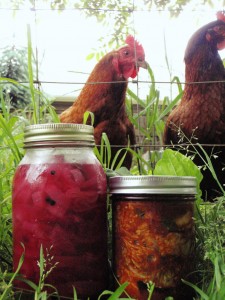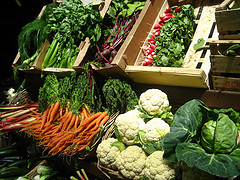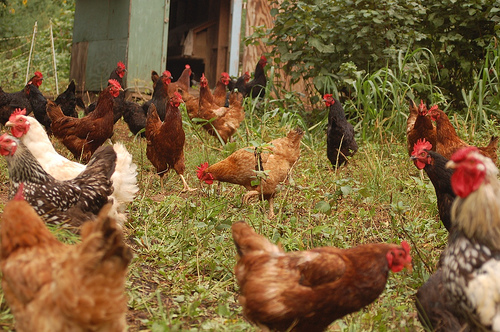 There is more to a jar of pickles than some dill and a batch of small cucumbers. In fact, you can pickle just about everything that you grew in your summertime garden. Things like beets, green beans, and sliced peaches can all be pickled and canned, making this an easy way to store fruits and vegetables long after harvesting them.
There is more to a jar of pickles than some dill and a batch of small cucumbers. In fact, you can pickle just about everything that you grew in your summertime garden. Things like beets, green beans, and sliced peaches can all be pickled and canned, making this an easy way to store fruits and vegetables long after harvesting them.
Before you start buying supplies and figuring out which of your leftover fruits and vegetables you want to preserve by pickling, take a quick look at these five very different methods:
1) Fermented Pickles – These are what everyone thinks of when they hear the word “pickles.” After processing the cucumbers (they can be sliced any number of ways or even left whole if small enough to fit in your jars) assemble your spices, can them, and then let them ferment for several weeks.
2) Fruit Pickles – Made from things like peaches and apples that have been sliced and simmered in a spicy cider vinegar and clove solution, these fruits take on a flavor that is similar to pie filling, only not as sweet. If you have a lot of fruit trees in your yard and have tired of making jellies and jam, these are an excellent alternative.
3) Fresh Pack Pickles – Bread and butter pickles are the most common example of fresh pack pickles. Unlike fermented pickles that have to sit for weeks, these only need to be immersed in the pickling fluid for a few hours. After they are canned and properly sealed, they can be eaten immediately.
4) Refrigerated Dills – These are great for people who are impatient, or those who want to eat their pickled cucumbers (or any other vegetables) practically right away. The method for making them falls somewhere in between fresh pack pickles and fermented pickles; after the pickling solution is made, the cucumbers are placed in jar, the fluid is poured over them, and the jars are properly sealed. Instead of putting them aside for almost a month, as you would the fermented pickles, simply place them in the refrigerator and wait for 24 hours before digging in.
5) Relishes – To make relish simply chop up vegetables, usually cucumbers, into very tiny bits before cooking them in a spicy vinegar-based “broth.” Once they have reached the consistency and taste levels that you desire, can them in a water canner as you would jam or jelly.
So, what can be pickled? The list is fairly long. Besides the aforementioned apple, peaches, beets, cucumbers and green beans; zucchini, peppers, onions, carrots, mushrooms, cherries, blueberries, strawberries, grapes, asparagus and cabbage can all be pickled. On top of this, there are no rules stating that only one kind of vegetable or fruit can be added to a single batch, so feel free to experiment with combinations, for example, you can place carrots, onions and cucumbers all in one jar.
Once you pickle your vegetables, as long as they are stored in a cool, dry place, they will stay good for up to four months, making this as excellent method of preservation!




No comments yet.